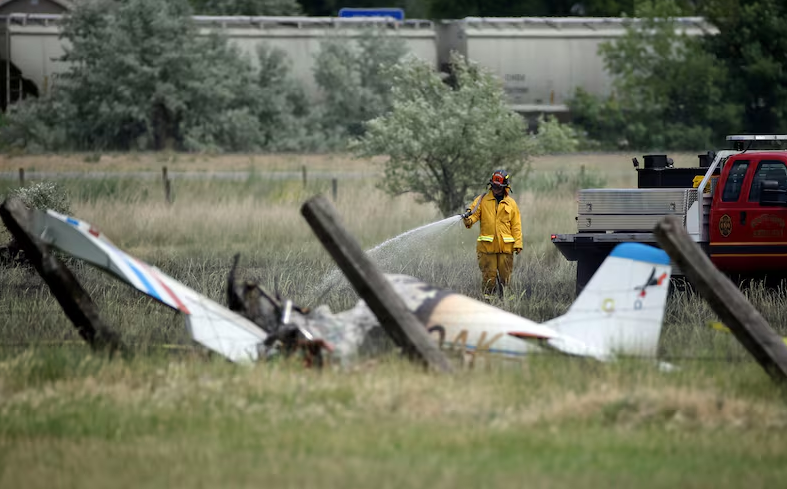On May 27, 2025, United Airlines flight UA770, a scheduled transatlantic flight from Barcelona to Chicago, was forced to declare a mid-flight emergency, prompting a swift diversion to London Heathrow Airport. The incident, marked by a chilling Squawk 7700 alert, instantly caught the attention of aviation authorities, media outlets, and travelers worldwide. Though the aircraft landed safely and no injuries were reported, the emergency opened up broader questions about aviation safety, preparedness, and what passengers should expect when something goes wrong in the sky.
In this article, we explore everything from what triggered the diversion to how it was managed and what lessons the aviation industry can learn moving forward.
The Flight That Became a Case Study: UA770’s Original Journey Plan
Flight UA770 was operated using a state-of-the-art Boeing 787-9 Dreamliner, known for its long-range capabilities and advanced onboard technology. The aircraft took off from Barcelona El Prat Airport (BCN), destined for Chicago O’Hare International Airport (ORD), on what was supposed to be a routine transatlantic journey covering over 4,200 miles.
For the first 90 minutes, the flight proceeded as expected. Cruising smoothly at a high altitude, there was no indication of trouble — until air traffic control screens lit up with an emergency code: 7700.
What Is Squawk 7700 — And Why Does It Matter?
In aviation, transponders are essential devices that allow pilots to communicate non-verbally with air traffic control (ATC). When pilots dial Squawk 7700, they’re signaling a general emergency—a universal alert that tells every ATC in range: “We have a serious problem.”
This code is reserved for extreme situations, such as:
- Engine failure
- Pressurization issues
- Fire on board
- Medical emergencies
- Critical system failures
Once the squawk is triggered, the aircraft gets immediate attention. All airspace traffic around it is cleared, and emergency protocols go into full effect.
UA770’s Emergency Declaration: What Happened in the Cockpit?
Though United Airlines has not officially released detailed technical specifics, credible aviation sources and flight data from platforms like FlightRadar24 indicate the aircraft started veering off its original route approximately 90 minutes after takeoff.
Real-time transponder data showed the flight:
- Maintaining controlled descent
- Turning toward London airspace
- Requesting immediate clearance for landing
The decision to divert was likely made in seconds. For pilots trained in thousands of simulated emergencies, this was protocol — not panic.
Why Heathrow Airport Was the Logical Emergency Choice
London Heathrow (LHR) was not chosen at random. It’s one of the busiest international airports in the world, but also among the best-equipped for emergencies involving wide-body aircraft like the 787-9.
Key reasons for choosing Heathrow include:
- Runway capacity to handle large aircraft
- Proximity to the aircraft’s location over the Atlantic
- Advanced emergency response teams
- On-site technical staff familiar with Boeing aircraft
- Medical facilities available immediately
As soon as the emergency code was received, Heathrow activated its Category 10 emergency plan — the highest alert level for aircraft emergencies.
Timeline of Events: How the Diversion Unfolded
| Time (BST) | Event |
|---|---|
| 16:05 | UA770 squawks 7700 mid-flight |
| 16:10 | ATC begins rerouting traffic; emergency declared |
| 16:30 | Flight begins descent toward London |
| 16:55 | UA770 lands safely on Runway 27R |
| 17:10 | Passengers begin disembarkation |
| 17:40 | Aircraft taken for emergency inspection |
This 90-minute window from emergency declaration to landing shows the high level of synchronization between pilots, ATC, and emergency services.
Passenger Experience During the Emergency
Passengers described the atmosphere as “tense but controlled.” According to post-flight interviews and social media posts:
- No panic broke out
- The cabin crew remained calm
- Communication was consistent but measured
- Passengers were assured it was a “precautionary diversion”
One passenger tweeted:
“We knew something was up, but the professionalism of the crew made all the difference. Everyone stayed calm. We landed safe.”
The ability of cabin crew to maintain composure under pressure cannot be overstated. This is where training and emotional intelligence become life-saving tools.
Aircraft Technical Analysis: What Might Have Gone Wrong?
While the airline has only referred to a “technical irregularity,” aviation analysts have offered a few possible causes based on patterns from past incidents:
1. Cabin Pressurization Warning
Sudden changes in cabin pressure can pose serious health risks, especially at high altitudes.
2. Instrument Failure
Modern aircraft rely heavily on digital systems. Malfunctioning sensors or instruments can lead to precautionary diversions.
3. Hydraulic or Electrical Faults
Even minor anomalies in fuel, hydraulics, or flight control systems can trigger emergency protocols.
4. False Warning Indicators
Sometimes, systems detect a threat that isn’t real. But when in doubt, pilots are trained to err on the side of safety.
Emergency Services Readiness at Heathrow
London Heathrow’s emergency preparedness was on full display:
- Fire and rescue teams stationed at the runway before landing
- Paramedics and medical staff available on-site
- Aviation engineers from Boeing-contracted services ready for inspection
Initial inspections revealed no structural damage or fire risk. The aircraft was later towed to a secure hangar for detailed diagnostics.
Boeing 787-9 Dreamliner: Built for Safety
Despite the emergency, the Dreamliner demonstrated its reliability. Key safety features of the Boeing 787-9 include:
- Triple-redundant flight control systems
- Real-time system diagnostics
- Multiple backup power sources
- Carbon-fiber fuselage for durability and pressurization
This aircraft is among the safest in the sky—and UA770’s incident only reinforced that reputation.
United Airlines’ Passenger Support Response
United Airlines acted quickly to manage the disruption:
- Meal vouchers and hotel stays were issued at Heathrow
- Rebooking assistance provided via staff and digital channels
- Medical checks offered to concerned passengers
- Timely communication through mobile apps and email
Their response earned praise for its efficiency and compassion, helping reduce the stress associated with such unexpected diversions.
Aviation Industry Perspective: How Rare Are These Events?
Statistically, less than 0.1% of commercial flights declare emergencies. However, aviation operates on the principle that “rare does not mean impossible.” That’s why:
- Pilot simulators replicate hundreds of emergency scenarios
- Crew undergo annual emergency response training
- ATC units run real-time coordination drills
- Aircraft undergo hundreds of pre-flight checks
Past Cases of Similar Emergency Diversions
The UA770 incident is not isolated. Other notable cases include:
- United Flight 328 (2021) — Engine failure led to emergency return to Denver
- Qatar Airways A380 (2023) — Cabin pressure issue caused diversion to Frankfurt
- American Airlines (2024) — Cockpit smoke led to emergency landing in Iceland
These examples show how quick thinking and procedural adherence consistently lead to safe outcomes.
What Should Passengers Do in a Mid-Flight Emergency?
If you’re ever on a flight that declares an emergency, remember:
- Stay calm – panic spreads faster than smoke.
- Follow crew instructions – they’re trained professionals.
- Know your exit – count the rows ahead of time.
- Secure ID and medication – in case of rapid disembarkation.
- Avoid speculation – listen to official announcements only.
Social Media and Public Reaction
As the emergency unfolded, hashtags like #UA770 and #EmergencyDiversion began trending. While conspiracy theories emerged (as they always do), the majority of public reaction was positive, praising:
- The crew’s professionalism
- Heathrow’s emergency response
- United Airlines’ transparent communication
Aviation Safety Lessons: What UA770 Taught Us
Every incident is a learning opportunity. UA770 reaffirmed key principles:
- Preparedness saves lives
- Calmness is contagious
- Systems redundancy matters
- Rapid response infrastructure is vital
More importantly, it reminded passengers that commercial aviation remains the safest mode of transport in the modern world.
Future Innovations to Reduce Diversions
The aviation industry is now investing in:
- Predictive maintenance using AI
- Sensor calibration to reduce false alarms
- In-flight remote diagnostics
- Better crew-passenger communication systems
Such technologies may soon make emergency diversions even rarer.
Final Thoughts on the United Airlines Flight UA770 Emergency Diversion
The diversion of United Airlines Flight UA770 was a textbook case of how aviation emergencies should be handled — swiftly, calmly, and professionally. Though passengers were shaken, none were harmed. And while questions remain about the technical fault, the industry’s overall resilience and readiness deserve recognition.
From the flight crew’s decision-making to Heathrow’s world-class emergency response and United’s passenger support, this incident proved that when things go wrong in the air, humanity and technology can still work hand in hand to bring everyone home safely.





